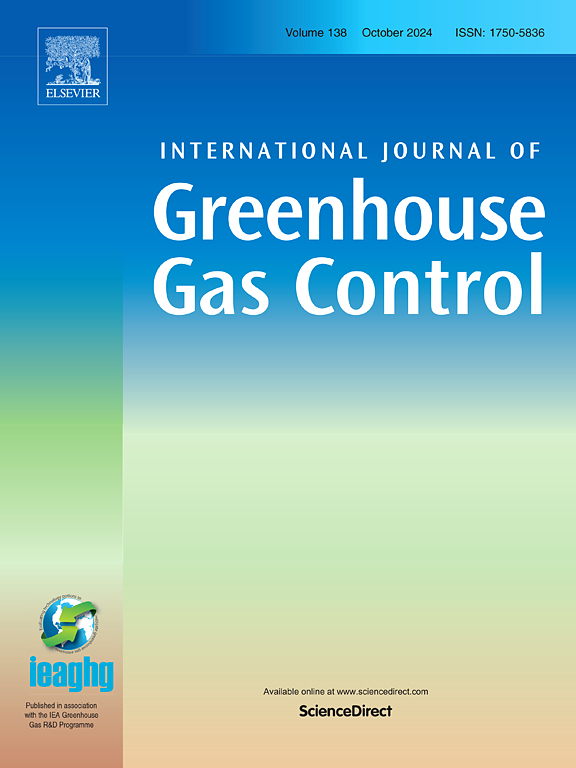水泥行业碳捕集与封存的部署——欧盟准备好了吗?
IF 5.2
3区 工程技术
Q2 ENERGY & FUELS
International Journal of Greenhouse Gas Control
Pub Date : 2025-08-22
DOI:10.1016/j.ijggc.2025.104442
引用次数: 0
摘要
在水泥行业实施碳捕集与封存(CCS)技术对于实现近零排放至关重要。然而,CCS仍然是资本密集型的,运营成本高,面临着巨大的市场、投资和基础设施协调障碍。考虑到二氧化碳捕获、运输和储存的需求,它的部署还取决于国家和地区的监管框架。本研究评估了欧盟在水泥行业实施CCS的准备情况。结果表明,欧盟27国水泥行业可以在与欧盟气候目标一致的时间表内过渡到接近零排放,前提是:(i)欧盟排放交易体系(ETS)价格上涨与Fit for 55一揽子计划的预测一致,(ii)有足够的二氧化碳储存能力。研究结果强调,有必要采取补充性政策措施和专门针对ccs的监管框架,以促进部署。尽管CCS的早期和快速实施可以带来巨大的气候效益,但它也带来了挑战,包括承包商、专业知识和材料的短缺。此外,历史投资模式表明,所需的部署规模和速度将是前所未有的。虽然欧盟为水泥行业的转型奠定了坚实的基础,但成员国之间的CCS部署潜力存在差异,这取决于水泥厂的地理分布和与储存地点的接近程度。各国的监管差异进一步使部署复杂化。这些因素必须得到解决,才能使欧盟水泥行业成功转向接近零排放的做法。本文章由计算机程序翻译,如有差异,请以英文原文为准。
Deployment of carbon capture and storage in the cement industry – Is the European Union up to shape?
The implementation of Carbon Capture and Storage (CCS) technologies in the cement industry is crucial for achieving near-zero emissions. However, CCS remains capital-intensive, with high operational costs, and faces significant market, investment, and infrastructure coordination barriers. Its deployment also depends on national and regional regulatory frameworks, given the need for CO₂ capture, transport, and storage. This study assesses the European Union’s (EU) readiness to implement CCS in the cement sector. Results indicate that the EU-27 cement industry could transition to near-zero emissions within a timeline aligned with EU climate targets, assuming: (i) the EU Emissions Trading System (ETS) price rises in line with projections under the Fit for 55 package, and (ii) sufficient CO₂ storage capacity is made available. The findings underscore the need for complementary policy measures and CCS-specific regulatory frameworks to facilitate deployment. Although early and rapid implementation of CCS could deliver substantial climate benefits, it also poses challenges, including shortages of contractors, expertise, and materials. Moreover, historical investment patterns suggest that the required scale and pace of deployment would be unprecedented. While the EU has laid a strong foundation for the cement industry’s transition, CCS deployment potential differs among Member States, depending on the geographic distribution of cement plants and proximity to storage sites. National regulatory variations further complicate deployment. These factors must be addressed to enable a successful shift to near-zero emissions practices in the EU cement industry.
求助全文
通过发布文献求助,成功后即可免费获取论文全文。
去求助
来源期刊
CiteScore
9.20
自引率
10.30%
发文量
199
审稿时长
4.8 months
期刊介绍:
The International Journal of Greenhouse Gas Control is a peer reviewed journal focusing on scientific and engineering developments in greenhouse gas control through capture and storage at large stationary emitters in the power sector and in other major resource, manufacturing and production industries. The Journal covers all greenhouse gas emissions within the power and industrial sectors, and comprises both technical and non-technical related literature in one volume. Original research, review and comments papers are included.

 求助内容:
求助内容: 应助结果提醒方式:
应助结果提醒方式:


